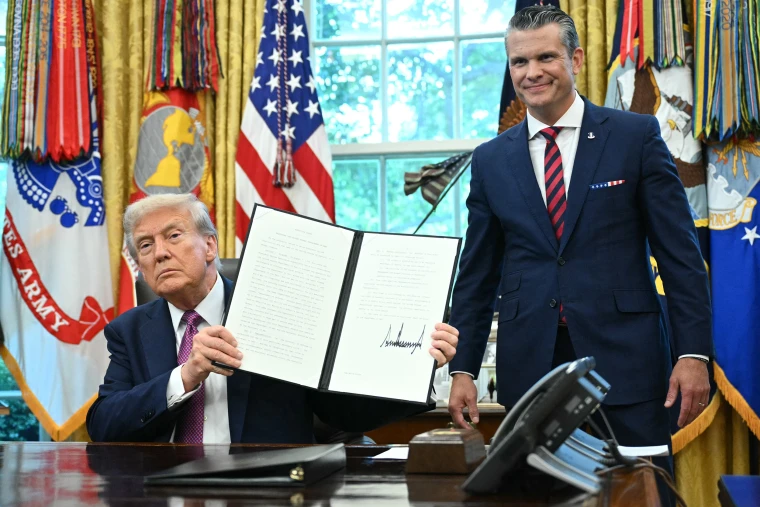
On September 5, 2025, President Donald Trump signed an executive order to rename the Department of Defense the Department of War. The new name is to be used as a ceremonial, secondary title for now as the administration waits for Congress’s approval to make it permanent.
The Department of War was originally established in 1789 by President George Washington but was renamed to the Department of Defense after World War II, in 1949. The change signified the expansion of duties to include defense initiatives such as national security, foreign policy, and intelligence.
Now, nearly eighty years later, the department’s name is being changed again, this time to denote what Executive Order 14347 calls the United States’ “ability and willingness to fight and win wars on behalf of our Nation at a moment’s notice, not just to defend.”
The change is part of an ongoing effort by the Trump administration to rename or restore retired names of military bases, naval ships, geographical features, and land formations. On January 20, 2025, President Trump’s first day back in office, he signed Executive Order 14172, “Restoring Names That Honor American Greatness.” Denali, a mountain in Alaska and the highest peak in the United States, was officially renamed Mount McKinley after President William McKinley, and the Gulf of Mexico was renamed the Gulf of America. Both names have been recognized federally, but public and international reception have been mixed.
In recent months, the Trump administration has also reinstated the names of nine important military bases. Originally named after Confederate officers, the bases were renamed in 2022 by the Biden administration after Congress forbade the naming of United States military bases after Confederate leaders. Three years later, the original names of the bases have been restored, but the names now honor other American war heroes who happen to share names with Confederate generals.
“We won a lot of battles out of those forts,” President Trump told troops during a June speech at Fort Bragg, a North Carolina army base. Temporarily renamed Fort Liberty in 2022, it has now been restored to Fort Bragg, this time honoring Private First Class Roland L. Bragg, a World War II paratrooper, instead of the Confederate general Braxton Bragg.
Meanwhile, the Navy has been reviewing ships’ names as well. Many on the list are named after Civil Rights leaders such as the USNS Harvey Milk, USNS Harriet Tubman, USNS Dolores Huerta, and the USNS Cesar Chavez, among others.
“I think the name changes are largely connected to what’s perceived as a culture war that splits the parties and has for a long time,” Upper School history teacher Bryan Nelle explained. Nelle noted that all the names and their implications previously contrasted with traditional values.
“The new changes are executing [President Trump’s] policy platform and are symbolic…they’re meant to signal to [the MAGA coalition] that [the nation is] returning to some perceived sense of American traditionalism or nativism,” Nelle said.
Upper School history teacher Nelson Miranda noted the significance of the newly renamed Department of War: “With all of the posturing that America is doing internationally as well–pulling away from what is seen as conventional strategies in the liberal world order, things like aid, things like providing [resources] to allies–the demands that we are making…all signal isolation while also…a more aggressive posture at the same time.”
Many have opposing opinions on the implications of the name changes. However, Miranda advises: “Care about what’s going on; read; form your own opinions about things and maybe try to participate in a way that doesn’t contribute to this polarization…Think about why something is happening before we react to it.”